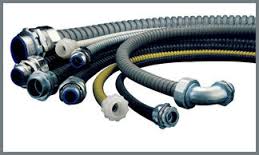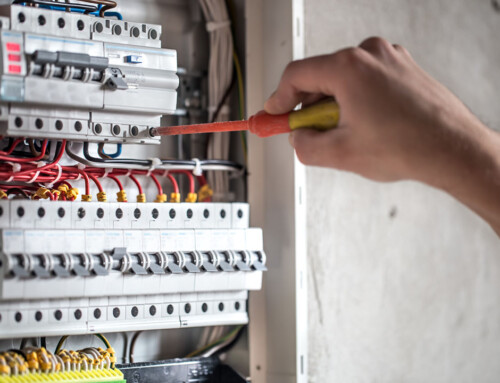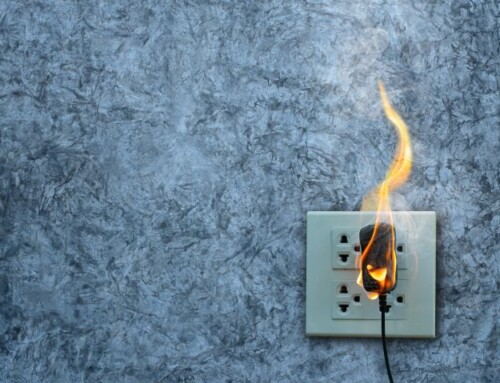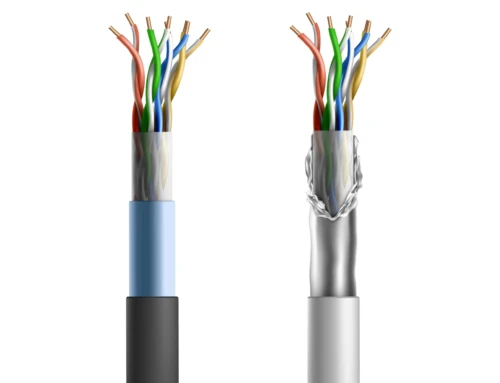Electrical conduits are an electrical piping system made of plastic, metal, or fiber, that are used to provide wiring or cable route to protect it. The use, form and installation details for electrical conduits are specified by the wiring regulations such as the US National Electrical Code (NEC) or other national or local code.
Types of Conduits
The location of an electrical conduit will usually determine what kind of material may be used. Since electrical conduits are used mainly in the outer wall surface in exposed locations, they are made of a material that is either flexible or rigid.
The following are the most commonly used materials:
- Rigid steel
- IMC
- EMT
- PVC
- PVC-Coated
- Liquid-tite/sealtite
The type of conduit system that is to be applied depends upon the wall thickness, mechanical stiffness and the material used to make the tubing. The material can be chosen for mechanical protection, corrosion resistance and for cutting the costs on installation charges. As far as wiring regulations for electrical equipment in hazardous areas are concerned, certain kinds of conduits need to be used depending on the regulation specifications.
- Rigid Steel Conduits
These are the heaviest and thickest amongst the multiple types electrical conduits and provide more protection than the flexible conduit for electrical wires. Rigid steel conduits are generally made with stainless steel, coated steel, or aluminium. It is treated for corrosion resistance by applying different coatings.
The key benefits of rigid steel conduits are:
-
-
- Best to shield from electromagnetic fields
- Gives protection against white rust and corrosion
- Provides smooth and continuous raceways for fast wire pulling
- Is useful for wiring in outdoor areas with extreme conditions such as under driveways, service feed installation, etc.
-
- Intermediate Metal Conduit (IMC)
This is another rigid material, but is comparatively lighter in weight and thickness and works similarly as the galvanized rigid conductors (GRC). IMC is designed specifically to protect cables and insulated electrical conductors.
Key Benefits:
-
-
- Larger interior diameter than the GRC with a smooth pipe interior that allows easy wire pulling through the conduit.
- Extended life span of conduits with a special corrosion resistant coating
Interchangeable with GRC - Most suitable for outdoor applications and exposed walls in garages, basements and other areas where there are high chances of damage.
-
- Electrical Metallic Tubing Conduit (EMT)
EMT is both easy to install and light in weight and is best used indoors. It is made of steel or aluminium.
Key Benefits:
-
-
- Lighter and cheaper than GRC
- Can be easily bent in specific directions and radius
- A-listed steel raceway of circular cross section and is unthreaded
- Mostly used in commercial and industrial buildings
-
- PVC Conduit
PVC conduits are the lightest and most inexpensive of all the conduits. They are best used indoors, though they offer excellent resistance against different weather conditions and elements of nature such as sunlight, moisture and corrosion.
Key Benefits:
-
-
- Weather resistant
- Useful for over ground concealed application
- It can be used for underground application, however it requires a lot of care
- Mostly used in utility, commercial and industrial applications
-
- PVC-Coated Conduit
The PVC Coated conduits are used for the cable and wire’s mechanical protection in hospitals, tunnels, etc. They can also be chosen in different colors.
Key Benefits:
-
-
- Water resistant
- High Mechanical Strength
- Flame retardant
- Highly flexible and durable
- Low smoke density
-
- Liquid-Tite/ Seal-Tite Conduit
Liquid-Tite conduits are flexible and come with outstanding mechanical strength. They are available in different types of jackets and are most useful for industrial and commercial applications where a maximum rating of 75 degrees Celsius is required. It is also used in places where continual vibrations and flexing may occur.
Key Benefits :
-
- Corrosion resistant
- Flexible construction
- Smooth interior useful for easy wire pull through
With electrical conduits being a necessary and critical aspect in every electrical system, it is essential to weigh the pros and cons of each type against the requirements before making the final choice.






